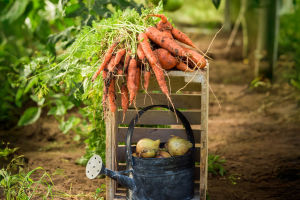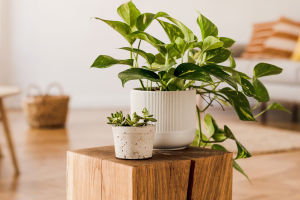Wetlands might not make it onto your dream vacation list, but ecologists will tell you they are some of the most valuable ecosystems on the planet. Why?
Because beneath the surface of their muddy waters and among their reed beds lies a network of plant life doing critical work—filtering water, holding soil together, storing carbon, and keeping wildlife alive.
If you're someone who cares about nature, biodiversity, or even clean drinking water, then the work of wetland plants should matter to you. Here's why they deserve the spotlight.
Wetland Plants as Life Support Systems
When we talk about biodiversity, we often picture colorful animals—frogs, birds, or fish. But it's the plants that make it all possible. Wetland plants, like cattails, bulrushes, sedges, and mangroves, provide the essential foundation for life in these habitats.
1. Structural Foundation: Many wetland species depend on plants for shelter and nesting. Think of herons nesting in reeds or amphibians laying eggs on aquatic leaves. These plants don't just decorate the water's edge—they're part of the architecture animals rely on.
2. Natural Filtration System: Wetland plants act like a living Brita filter. Their roots trap sediments and pollutants, removing heavy metals and excess nutrients from the water. This helps prevent harmful algal blooms and supports clean waterways downstream.
3. Carbon Capture Specialists: Peat-forming wetland plants, like sphagnum mosses, store vast amounts of carbon in their roots and surrounding soil. According to a study published in Global Change Biology, wetlands hold about 30% of all soil carbon, despite covering only 6% of Earth's land surface.
Invisible, But Indispensable
Many of the contributions made by wetland plants are easy to overlook. They're not as dramatic as a jaguar in a rainforest, but their role is just as vital.
1. Stabilizing Soil: Their dense root systems prevent erosion and stabilize shorelines. This is especially important in flood-prone areas and coastal zones, where erosion can threaten communities and infrastructure.
2. Buffer Against Climate Extremes: Wetlands act like sponges. Plants slow water flow and absorb excess rainfall during storms, then release it slowly during dry periods. This natural buffering helps mitigate the impacts of both droughts and floods.
3. Supporting Rare and Endangered Species: Wetlands are home to one-third of the world's threatened species. Plants support this biodiversity by creating microhabitats—places of shade, warmth, or still water that are critical for breeding and survival.
Threats to Wetland Flora
Sadly, wetlands are disappearing at an alarming rate. Since 1900, over 60% of the world's wetlands have been lost, often drained for agriculture, urban development, or infrastructure projects. And when wetlands go, the plants go with them.
1. Invasive Species: Non-native plants often outcompete native wetland vegetation, disrupting food webs and reducing habitat quality for wildlife.
2. Pollution and Runoff: Fertilizers and industrial runoff can poison wetland soils, damaging plant roots and weakening their ability to filter water.
3. Climate Change: Rising temperatures and sea levels can alter water salinity, especially in coastal wetlands, making it harder for traditional wetland plants to survive.
Why Plant Conservation Is Smart Conservation
Focusing on wetland plants is not just about aesthetics or even saving a particular animal—it's about protecting the systems that keep the planet functioning.
1. Easy to Monitor, Easier to Restore: Plants are often easier to monitor and reintroduce than animals. Restoring wetland vegetation can lead to faster ecosystem recovery.
2. Multiplier Effect: When plants thrive, so do insects, birds, fish, and mammals. A single acre of healthy wetland vegetation can support hundreds of species.
3. Human Benefit: Wetlands save billions annually in water purification, storm protection, and flood control. A study by the Ramsar Convention found that every dollar invested in wetland restoration returns up to $10 in benefits.
What You Can Do
If you're not a biologist or conservationist, you can still play a role in protecting wetland plants:
1. Support wetland protection policies at local and national levels.
2. Visit wetlands responsibly and respect boardwalks or trail boundaries to avoid trampling delicate plants.
3. Donate to organizations focused on wetland conservation like the Wetlands International or The Nature Conservancy.
4. Reduce lawn fertilizer use, which can run off into local waterways and harm nearby wetlands.
Next time you see a soggy marsh or a quiet pond fringed with grasses, pause for a moment. You're looking at one of nature's most hardworking and underappreciated ecosystems—and the plants there are doing far more than just "sitting in the mud." Their quiet work sustains life, cleans water, stores carbon, and gives rare species a place to thrive.
Do you have a favorite local wetland? Have you ever seen its plant life up close? If not, maybe it's time to go exploring—and start seeing these hidden heroes in a new light.


